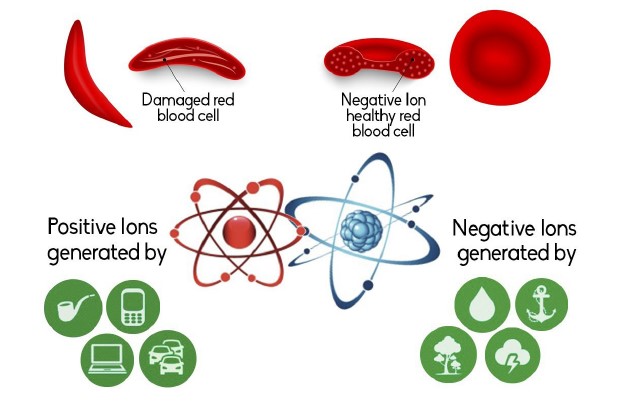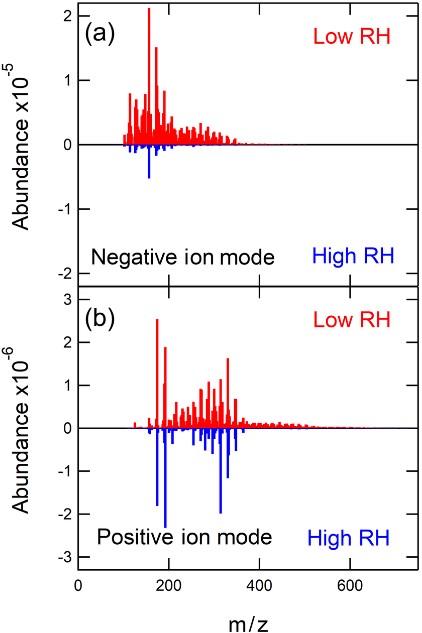Mass spectrometry is a powerful analytical tool that is used to identify, quantify, and characterize molecules. One of the most important aspects of mass spectrometry is the use of positive and negative ionization modes to ionize molecules for different testing applications. In this blog post, we will discuss the differences between positive and negative ionization modes in mass spectrometry and how they can be used to analyze different molecules.
Positive and negative ionization

Mass spectrometry is a powerful analytical technique used to identify the molecular composition of a sample. It works by separating molecules according to their mass and charge.
Positive and negative ionization are two different methods used to create ions in mass spectrometry. Positive ionization involves adding an extra proton to the molecule, while negative ionization involves removing an electron from the molecule. Each process produces ions with different characteristics and can be used to obtain different types of information about a sample.
Positive ionization is typically used to identify molecules with an additional proton, such as peptides, while negative ionization is used to identify molecules with fewer electrons, such as fatty acids. By understanding the differences between positive and negative ionization, scientists can use mass spectrometry to gain a better understanding of the composition of a sample.
Benefits of positive ionization

When it comes to mass spectrometry, the difference between positive and negative ionization is a crucial one. Positive ionization occurs when an electron is removed from from a molecule, leaving a positively charged ion behind. This can be beneficial to researchers as it allows them to accurately measure the mass and abundance of the molecule.
This can be beneficial to researchers as it allows them to accurately measure the mass and abundance of the molecule. Negative ionization, on the other hand, occurs when an electron is added to the molecule, leaving a negatively charged ion. This can be advantageous for researchers as it can provide greater separation of compounds in the sample.
In addition, it can help to improve the sensitivity of the measurement. Ultimately, both positive and negative ionization have their advantages and drawbacks, but understanding the difference between them can be a powerful tool for researchers who are looking to obtain the most accurate and precise results.
Benefits of negative ionization
Negative ionization in mass spectrometry is a powerful technique used to analyze the structure of molecules. Unlike positive ionization, which fragments molecules into cations, negative ionization fragments molecules into anions.
This difference results in a few key benefits, including increased sensitivity and improved selectivity when distinguishing between molecules. Additionally, due to the nature of negative ions being more stable than cations, the technique is able to detect molecules with higher molecular weights, providing a more comprehensive view of the sample. Finally, negative ionization has the potential to identify the structure of molecules due to the presence of more fragment ions, which can be used to infer the structure of the parent molecule.
All in all, negative ionization is an incredibly useful tool for mass spectrometry, offering a range of benefits over its positive ionization counterpart.
Comparison of positive and negative ionization
Mass spectrometry is a powerful analytical technique used to identify and quantify molecules, and it relies on the difference between positive and negative ionization. Positive and negative ionization both involve the production of charged particles, but the differences in the energy required to create these particles results in different results.
Positive ionization involves exciting atoms or molecules with energy, which causes them to lose an electron and form a positive ion. Negative ionization, on the other hand, relies on electrons being added to atoms or molecules, resulting in the formation of a negative ion. These differences in ionization can have a profound effect on the analysis of molecules in mass spectrometry, as the different ions can interact differently with the spectrometer’s detection system.
Challenges with positive and negative ionization
Mass spectrometry is a powerful tool used to identify and quantify the molecules in a sample. It works by ionizing molecules and then measuring the mass-to-charge ratio of the resulting ions.
While both methods yield ions, the resulting ions differ in their polarities. Positively ionized ions have an overall positive charge due to the addition of a proton, while negatively ionized ions have an overall negative charge due to the loss of an electron.
This difference in polarity can be used to detect the presence of different molecules in a sample, making it essential to properly distinguish between the two ionization methods.
Final Touch
In conclusion, positive and negative ionization in mass spectrometry are two common methods used to analyze molecules. Positive ionization involves the creation of positively charged ions by bombarding the sample with electrons, while negative ionization involves the creation of negatively charged ions by bombarding the sample with a proton beam.
Both methods provide useful information about the structure and composition of molecules, and can be used to detect trace amounts of compounds. Each method has its own advantages and disadvantages, so the choice of which method to use will depend on the purpose of the analysis.

